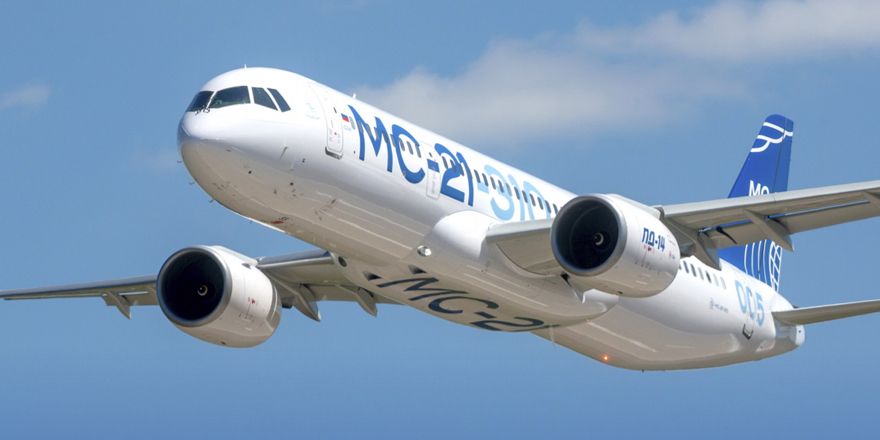The development of a distinctive wing for the domestically produced narrow-body airliner MC-21 has been finalized by specialists from “AeroComposite,” who have unveiled the final iteration. The structure is produced using a technology that has no global equivalents and is named after the characteristic color of its material.
The main difference from conventional solutions is the absence of adhesive-riveted connections, seams, and jig assembly. The wing is designed as a singular unit, which offers an unparalleled level of strength in comparison to its metal counterparts.
The lightweight composite structure at KB-602 MAI, as per Dmitry Dyakonov, chief designer, enables an increase in passenger capacity and a reduction in fuel consumption. Additionally, the wings’ “baking” technology facilitates their replacement in the event of damage.
The wing underwent extensive testing in 2022, and it is now prepared for mass production.
In the meantime, United Aircraft Corporation (UAC) announced that the Irkutsk Aviation Plant (IAP) in shop 255 of the aggregate-assembly production had commenced the assembly of the F3 compartment of the twelfth serial copy of the fuselage of the aircraft MC-21-310 at the end of November.
Alexey Zimin, Deputy Head of Shop 255, told an in-house newspaper, “‘The F3 compartment represents one of the most complex structures of the MS-21 fuselage. Its production is carried out within the framework of cooperation with the enterprises-suppliers: the branch of AeroComposite JSC and the branch of PJSC IL-Aviastar, which produce the centroplane and fuselage panels. The use of composite materials and complex geometry requires high assembly accuracy and the use of specialized equipment.”
At station S30.2 of the in-line assembly process, compartment F3 is assembled as a complete unit from ten units. The passenger floor structure, side panels, upper section, air conditioning system compartment (environmental control system, ECS), centroplane, and main landing gear support recess are all integrated.
In October of this year, it was reported that a stand-in S31 station for the assembly of the ECS compartment is being assembled in workshop 255, and a stand-in P005 station is being developed for the assembly of panels for the main landing gear niche and ECS compartment. Station S30.2 was commissioned at the end of 2021. This will enable the simultaneous assembly of two F3 compartments, thereby enhancing the overall rhythm of the production process.
Since the previous MC-21 aircraft set, new technological solutions have been implemented to enhance the quality of assembly and increase production efficiency. Conductors are used for docking units in conjunction with drilling machines that are fitted with automatic feed. According to an article in the factory newspaper, this method enables the optimization of labor costs, the enhancement of accuracy, and the reduction of assembly cycle time.
The budget for the development of a shorter version of MC-21, known as MC-21-210, has also been approved by Russia. Sergei Chemezov, the director of Rostec, stated on November 12 that the MC-21 passenger plane’s shortened version will accommodate approximately 160-170 passengers. “It is premature to give exact figures because the development is at the initial stage,” he added.
When the MC-21 project was initially being developed by the Yakovlev Engineering Center of Irkut Corporation, the center was working on two variants of the aircraft: the basic MC-21-200 and the enlarged MC-21-300. However, the UAC management ultimately decided to concentrate on the MC-21-300 version. The MC-21-200 modification’s capacity was specified as 130 to 165 passengers, contingent upon the cabin configuration, during Irkut’s presentation of the MC-21 aircraft at MAKS-2017. The aircraft are assigned indexes of -210 and -310 in the import-substituted form, respectively. In April of this year, Andrei Boginsky discussed the commencement of work on the MC-21-210 variant. The budget for the development of the preliminary design of MC-21-210 will be 1.94 billion rubles in 2024-2025, which is about 18.6 million USD.
Official Website of Youtube Channel – Altitude Addicts
